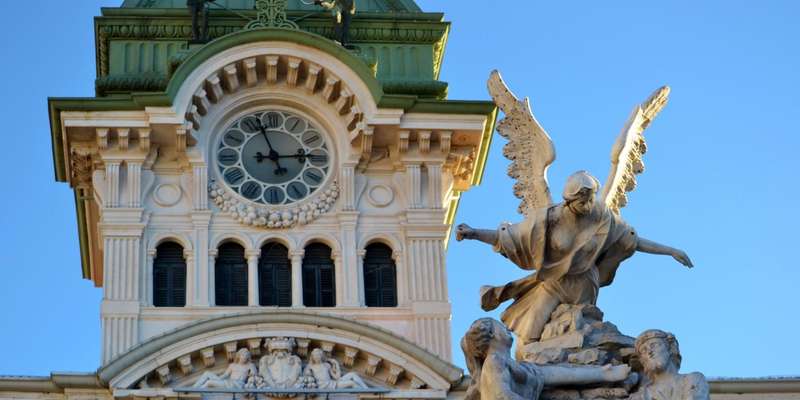- Home
- Useful Tips
- Visiting the Risiera di San...
Visiting the Risiera di San Sabba presents a profound ethical dilemma for thoughtful travelers. As the only Nazi concentration camp on Italian soil, this Trieste memorial forces visitors to confront uncomfortable history while honoring victims appropriately. Over 60% of cultural travelers report feeling unprepared for the emotional weight of Holocaust sites, with many uncertain about proper etiquette or how to process the experience. The site's industrial brick buildings – originally a rice husking facility – conceal chilling details like the still-visible crematorium chimney. Without context, visitors risk missing crucial historical nuances or, worse, causing unintentional disrespect through uninformed behavior. Local historians note increasing concerns about 'dark tourism' at memorial sites, where well-meaning visitors sometimes prioritize photography over reflection. The challenge lies in balancing educational value with solemn remembrance, especially when visiting with children or on limited time. Trieste's complex multicultural past adds layers to the site's significance that most guidebooks barely mention.


Understanding the site's historical significance before you visit
The Risiera's transformation from industrial complex to deportation center reveals Italy's complicated WWII role that many visitors overlook. Unlike purpose-built camps, its adaptation for imprisonment shows the Nazis' opportunistic brutality in occupied territories. The rice mill's location near Trieste's rail network made it ideal for transporting prisoners to other camps, while its urban setting allowed atrocities to occur shockingly close to civilian life. Local historians emphasize how the Risiera operated as part of the broader Nazi machinery across borders, with victims coming from Slovenia, Croatia, and beyond. This context changes how you perceive the modest brick structures – their ordinary appearance made the crimes within more inconceivable to neighbors. The on-site museum's documents expose the bureaucratic coldness of genocide, from prisoner intake records to execution orders. Understanding these details beforehand helps visitors comprehend the memorial's layout and artifacts rather than confronting them unprepared.
Planning your visit with respect and sensitivity
Timing your visit carefully ensures the space's solemnity isn't compromised by crowds or weather extremes. Early weekday mornings typically offer quieter reflection time, while summer afternoons can feel incongruously bright for such somber surroundings. The memorial's concrete courtyard takes on different atmospheres throughout the day – the angled morning light reveals wall textures marking former cell locations, while overcast skies accentuate the site's heaviness. Dressing appropriately matters more than at typical tourist sites; locals notice when visitors treat it like a casual attraction. The on-site documentation center provides essential context through survivor testimonies and photographs, but requires at least 30 minutes to absorb properly. Many visitors find returning to certain areas after reading the exhibits creates a more meaningful experience. Those traveling with teens face particular challenges in balancing education with emotional impact – the museum's curated audio guides help by providing age-appropriate commentary.
Navigating Trieste's connection to the memorial
The Risiera's relationship to modern Trieste becomes clearer when exploring the city's Jewish quarter beforehand. Via del Monte parallels the memorial's history with unmarked buildings that once hid refugees, while the synagogue's resilience underscores the community's survival. Local cafes near Piazza Unità often have elderly patrons who remember postwar debates about the site's preservation – their stories add layers to the official history. Public transport to the memorial involves a short bus ride through residential neighborhoods, a journey that highlights how ordinary life continued near such horror. Walking back toward the city center along the Canal Grande provides decompression time, passing bookshops with relevant historical works. This approach turns the visit into a contemplative pilgrimage rather than a checklist item. Evening passeggiata along the waterfront offers natural reflection time, where the Adriatic's expanse puts human struggles in perspective.
Alternative ways to honor the memory beyond visiting
For those unable to visit physically or seeking supplemental learning, Trieste's historical societies have created virtual archives with survivor interviews. The Carlo e Vera Wagner Jewish Cultural Museum downtown offers complementary exhibits on pre-war Jewish life, helping visitors understand what was lost. Local educators recommend reading Primo Levi's account of nearby Fossoli camp before any Risiera visit to grasp the regional network of oppression. Memorial ceremonies held each January for Holocaust Remembrance Day transform the site with candlelit vigils and readings, offering a profoundly different experience than daytime tours. Nearby Karst villages hold their own remembrance traditions, often overlooked by tourists. Those moved to take action can support the memorial's preservation efforts or contemporary human rights organizations recommended by the site's staff. These alternatives ensure the visit's impact extends beyond a single day, turning historical awareness into ongoing engagement.



